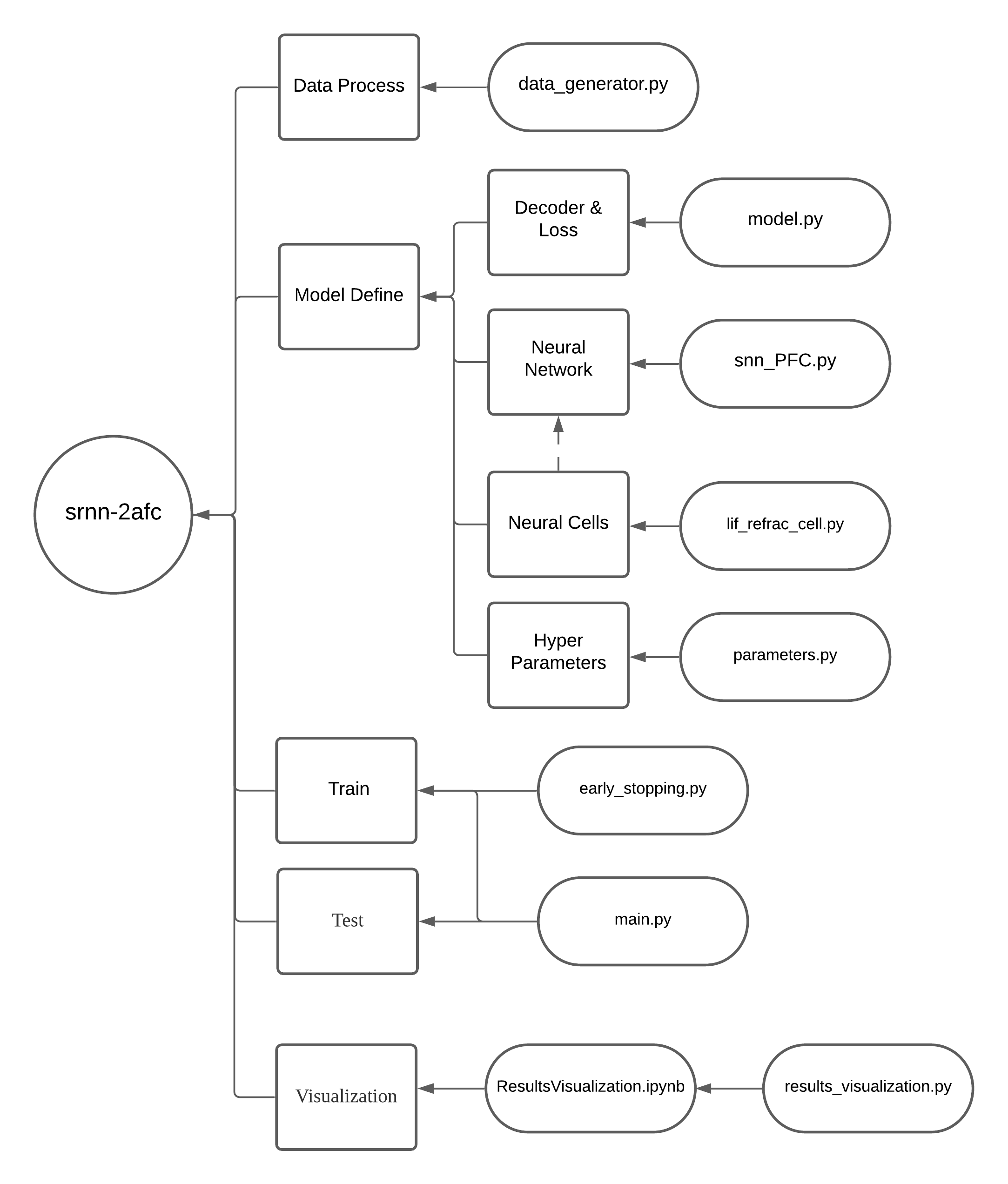Spiking recurrent neural networks represent task-relevant neural sequences in rule-dependent computation
This code is written in Python 3 and requires
- norse==0.03
This SRNN implementation was built upon the Python package Norse (https://github.com/norse/norse), based on PyTorch and deep learning-compatible spiking neural network components, including network architectures and optimization algorithms.
-
matplotlib
-
dataclasses
-
tensorboard
Example task specifications, including all hyper-parameters in the paper, can be found in main.py and parameters.py.
Training networks with default set-up
python main.py
Testing networks based on the checkpoint. The model loads the checkpoint file snn_PFC-final.pt in the dir path_to_ckpt_dir. The trained checkpoint is already shared in Google Drive
python main.py --only_test True --load True --load_path path_to_ckpt
If you want to save the time series data in the SRNN, including voltages, currents and spikes, please set parameter save_recording to True.
When training starts, a dir, named as the timestamp, will be generated automatically. Accuracy and loss metrics are saved inside as a tensorboard log file, please use Tensorboard to open them.
Please check ResultsVisualization.ipynb and results_visualization.py for details.
The visualization outputs vary for different models, but the results should be similar to those in the paper. If not, please firstly try to train multiple models with the same set-up to obtain the optimal results, since the white noise in the training process sometimes has an excessive impact on the training process. If still not working, plz adjust your parameters for the model, because this is a toy problem and the different running platforms and frameworks may have different outcomes.
MIT
- Xue, Xiaohe, Michael M. Halassa, and Zhe S. Chen. "Spiking recurrent neural networks represent task-relevant neural sequences in rule-dependent computation." bioRxiv (2021).
